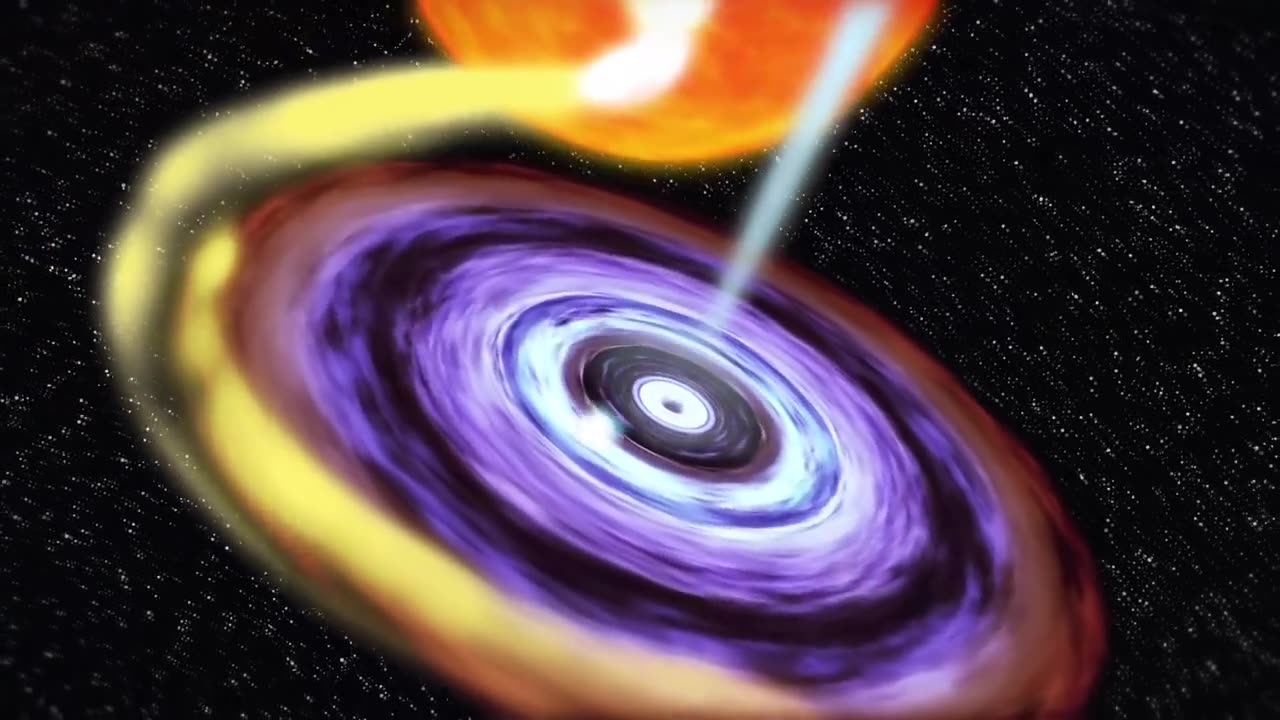Premium Only Content

NASA | X-ray Nova Reveals a New Black Hole in Our Galaxy
407,591 views Oct 5, 2012
On Sept. 16, NASA's Swift satellite detected a rising tide of high-energy X-rays from a source toward the center of our Milky Way galaxy. The outburst, produced by a rare X-ray nova, announced the presence of a previously unknown stellar-mass black hole.
An X-ray nova is a short-lived X-ray source that appears suddenly, reaches its emission peak in a few days and then fades out over a period of months. The outburst arises when a torrent of stored gas suddenly rushes toward one of the most compact objects known, either a neutron star or a black hole.
Named Swift J1745-26 after the coordinates of its sky position, the nova is located a few degrees from the center of our galaxy toward the constellation Sagittarius. While astronomers do not know its precise distance, they think the object resides about 20,000 to 30,000 light-years away in the galaxy's inner region. The pattern of X-rays from the nova signals that the central object is a black hole.
Ground-based observatories detected infrared and radio emissions, but thick clouds of obscuring dust have prevented astronomers from catching Swift J1745-26 in visible light.
The black hole must be a member of a low-mass X-ray binary (LMXB) system, which includes a normal, sun-like star. A stream of gas flows from the normal star and enters into a storage disk around the black hole. In most LMXBs, the gas in the disk spirals inward, heats up as it heads toward the black hole, and produces a steady stream of X-rays.
But under certain conditions, stable flow within the disk depends on the rate of matter flowing into it from the companion star. At certain rates, the disk fails to maintain a steady internal flow and instead flips between two dramatically different conditions -- a cooler, less ionized state where gas simply collects in the outer portion of the disk like water behind a dam, and a hotter, more ionized state that sends a tidal wave of gas surging toward the center.
This phenomenon, called the thermal-viscous limit cycle, helps astronomers explain transient outbursts across a wide range of systems, from protoplanetary disks around young stars, to dwarf novae - where the central object is a white dwarf star - and even bright emission from supermassive black holes in the hearts of distant galaxies.
-
 4:17:18
4:17:18
The Bubba Army
1 day agoTrump Pardoning Diddy? - Bubba the Love Sponge® Show | 7/30/25
44K10 -
 1:19:08
1:19:08
Dear America
2 hours agoGhislaine Maxwell WANTS TO TESTIFY + New Audio Reveals Trump’s Relationship With Epstein!!
106K79 -
 LIVE
LIVE
Badlands Media
9 hours agoBadlands Daily: July 30, 2025
3,860 watching -
 LIVE
LIVE
Matt Kohrs
10 hours agoHappy Fed Decision Day!!! || Live Trading
646 watching -
 59:26
59:26
Part Of The Problem
12 hours agoDave Smith | War Without Propaganda | Part Of The Problem 1291
4.34K5 -
 LIVE
LIVE
Wendy Bell Radio
7 hours ago2 Minutes And 17 Seconds
7,981 watching -
 LIVE
LIVE
JuicyJohns
2 hours ago $1.39 earned🟢#1 REBIRTH PLAYER 10.2+ KD🟢$500 GIVEAWAY
124 watching -
 53:02
53:02
The Official Corbett Report Rumble Channel
14 hours agoHow to Leave the Cage - #SolutionsWatch
4.83K2 -
 42:47
42:47
Outspoken with Dr. Naomi Wolf
17 hours ago"Jonathan Pollard: Are Allies of Israel being Targeted?"
12.5K5 -
 1:29:49
1:29:49
Game On!
18 hours ago $1.89 earned10,000 Followers Celebration Stream! Let's Talk Sports!
43K2